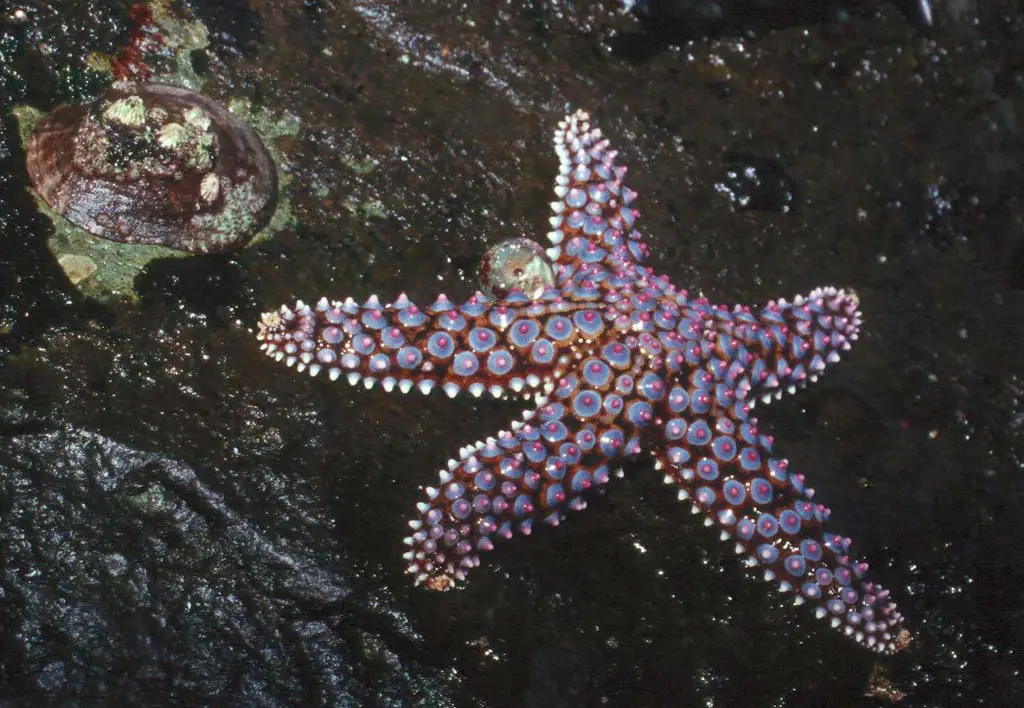REGION — Sea stars along the West Coast are dying en masse. The culprit: what biologists are calling sea star wasting syndrome.
And the disease has made its way to San Diego’s shores.
The syndrome was first reported in the state of Washington. It has since swept south, decimating sea star — sometimes known as starfish — populations in some coastal pockets, while sparing other areas.
A sea star die-off hasn’t occurred in San Diego. Only three reports of the disease have been confirmed in the region so far, one in La Jolla and two instances in northern Point Loma.
However, researchers noted they’ve heard anecdotal reports of the syndrome from local divers.
“San Diego is just now starting to get hit; the Channel Islands are just now getting hit as well,” said Pete Raimondi, chair of the Ecology and Evolutionary Biology Department at UC Santa Cruz.

Raimondi and other researchers established an interactive map tracking the disease’s spread this past fall.
“We want to learn about the likely cause, consequence and duration of the disease,” Raimondi said.
Teams of biologists up and down the coast have contributed to the map, which can be found at data.piscoweb.org. Citizen sightings are also included.
“We welcome input for it,” Raimondi said.
No matter the source, before posting reports to the map, Raimondi said researchers verify sightings by asking detailed questions.
Raimondi said the syndrome hasn’t been observed in Baja California. Nonetheless, he expects the disease to keep marching south.
For afflicted sea stars, lesions appear, followed by tissue decay, eventually leading to death. Once they contract the disease, sea stars can die within only a few days, though some recover.
The disease has been found in about a dozen species. Hard hit species include what’s commonly called the sunflower star, according to Raimondi.
The syndrome has occurred several times over the past 30 years, and it has been associated with El Nino causing warm waters, Raimondi said.
Yet we’re currently not in an El Nino. Plus, during past events, the disease moved up the coast with nearshore currents.
“That’s very difficult for us to get our heads around, because it’s not a classic movement pattern,” Raimondi said.
The exact cause also has researchers scratching their heads.
Raimondi said it’s likely something is making the sea stars susceptible to secondary infection from a pathogen or virus. If a virus, researchers want to know whether it’s native or exotic, and how it’s moving.
He added ocean acidification was initially looked at as an explanation, but it doesn’t explain the disease’s patchy spread.
And Fukushima radiation is extremely unlikely; radiation hasn’t registered above ambient levels.
The loss of sea stars from the ecosystem is unlikely to result in extinctions, Raimondi said. But he added the elimination of so many starfish could lead to more mussels and other starfish prey, ultimately affecting crabs, fish and other species.
Fortunately, there’s a lot of baseline data for sea stars throughout the state, because researchers have been continuously tracking sea life and ocean conditions for the past two decades.
The large pool of data, past and present, has helped biologists understand what’s happening, Raimondi said.
Standing in tide pools at seaside reef last week, Keith Lombardo, chief of natural sources with Cabrillo National Monument, said local researchers are dedicating more time to looking for signs of the syndrome.
So far, searches at Cabrillo haven’t yielded sightings. However, the species most commonly affected by the disease typically aren’t found there.
And surveys at Cabrillo have stayed fairly close to the beach, while affected sea stars could be farther offshore.
“I haven’t seen the disease, but it could be there,” Lombardo said.
Jeremy Long, assistant professor of biology at San Diego State University, coordinated sea star searches with students at Scripps Pier, Bird Rock and other locations. They didn’t see any infected sea stars, or let alone many sea stars at all.
Long noted some have suggested the number of local sea stars has declined over the last three decades, which could be attributed to populations never recovering from past wasting syndromes.
Have there been any efforts to prevent the syndrome?
“If you don’t know the cause and you’re going to try and do something, whatever you’re trying to do is either potentially a waste of time or could even do more harm,” Long said.



1 comment
For all interested, Enenews dot com has been reporting on the starfish deaths and other sea-life deaths/illnesses as Japan’s nuclear meltdowns released a huge percentage of meltdown-radiation into the Pacific Ocean, and the radiation has arrived on the West Coast.
See scientific studies, plume maps, etc. on Enenews.
Comments are closed.